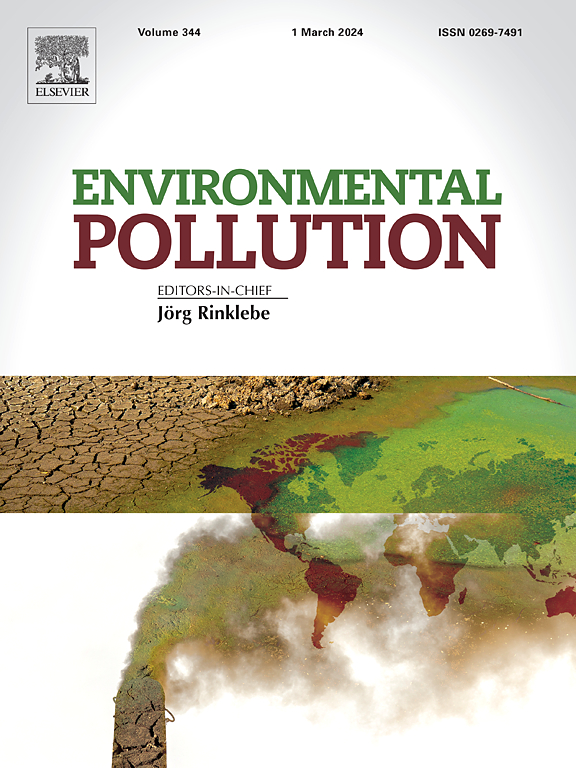Oxygenated volatile organic compounds in Beijing: Characteristics, chemical reactivity, and source identification
IF 7.6
2区 环境科学与生态学
Q1 ENVIRONMENTAL SCIENCES
引用次数: 0
Abstract
As important components of volatile organic compounds (VOCs), oxygenated VOCs (OVOCs) play a crucial role in the photochemical formation of ozone (O3), especially in the polluted areas in the North China Plain (NCP). However, their seasonal characteristics and sources are not well understood. In this study, one-year measurements of 10 typical OVOCs were conducted through proton-transfer reaction time-of-flight mass spectrometry (PTR-ToF-MS) at an urban site (39.95° N, 116.32° E, 96 m a.s.l.) in Beijing. Aldehydes and alcohols were the most abundant types of OVOCs in the entire year, with mean concentrations of 16.3 ppbv and 15.9 ppbv, respectively, and mean proportions of 33.8 % and 32.4 % of the total. Formaldehyde and ethanol sustained the highest concentrations throughout the year, with mean annual concentrations of 13.5 ppbv and 10.8 ppbv, respectively. The results indicated that the concentrations of OVOCs were highest in the summer, along with the maximum O3-formation potentials and hydroxyl radical (•OH) reactivity values of 83.5 ppbv and 2.8 s−1, respectively. Results from the source apportionment of OVOCs based on multiple linear regression models indicated that secondary productions were the predominant source in summer. In particular, the secondary sources of aldehydes represented by CH2O and acetaldehyde accounted for 36.7 % and 51.4 % of the total, respectively. This study determined the concentrations and photochemical generation of OVOCs in different seasons, providing a basis for O3 pollution control in urban areas of Beijing.


求助全文
约1分钟内获得全文
求助全文
来源期刊

Environmental Pollution
环境科学-环境科学
CiteScore
16.00
自引率
6.70%
发文量
2082
审稿时长
2.9 months
期刊介绍:
Environmental Pollution is an international peer-reviewed journal that publishes high-quality research papers and review articles covering all aspects of environmental pollution and its impacts on ecosystems and human health.
Subject areas include, but are not limited to:
• Sources and occurrences of pollutants that are clearly defined and measured in environmental compartments, food and food-related items, and human bodies;
• Interlinks between contaminant exposure and biological, ecological, and human health effects, including those of climate change;
• Contaminants of emerging concerns (including but not limited to antibiotic resistant microorganisms or genes, microplastics/nanoplastics, electronic wastes, light, and noise) and/or their biological, ecological, or human health effects;
• Laboratory and field studies on the remediation/mitigation of environmental pollution via new techniques and with clear links to biological, ecological, or human health effects;
• Modeling of pollution processes, patterns, or trends that is of clear environmental and/or human health interest;
• New techniques that measure and examine environmental occurrences, transport, behavior, and effects of pollutants within the environment or the laboratory, provided that they can be clearly used to address problems within regional or global environmental compartments.
 求助内容:
求助内容: 应助结果提醒方式:
应助结果提醒方式:


